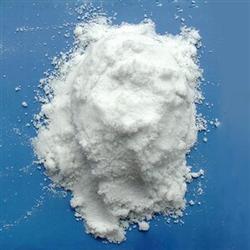What methods can not be used in the application of agricultural ammonium bicarbonate?

What methods can not be used in the application of agricultural ammonium bicarbonate? Please guide the application of ammonium bicarbonate can not use the following methods: 1. Foliar spraying: ammonium bicarbonate has strong corrosiveness to crop leaves and is easy to burn leaves, so it can not be used as fertilizer sprayed on crop leaves. 2. Dry soil fertilization: the soil is dry, even if the soil is covered deeply, the fertilizer can not be dissolved and absorbed in time for crop absorption and utilization. 3. High temperature fertilization: the volatility of ammonium bicarbonate is closely related to the air temperature, and the higher the temperature is, the more volatile it is, so ammonium bicarbonate should not be applied in the hot sun. 4. mixed application with alkaline fertilizer: ammonium bicarbonate mixed with alkaline plant ash and lime, or at the same time, will lead to volatilization loss of nitrogen and loss of fertilizer effect, so ammonium bicarbonate should be applied alone. 5. mixed with bacterial fertilizer: ammonium bicarbonate will emit a certain concentration of ammonia after application. If it comes into contact with bacterial fertilizer, it will kill the living bacteria in bacterial fertilizer and lose the yield-increasing effect of bacterial fertilizer. 6. Overnight use after mixing with calcium superphosphate: although the effect of mixed application of ammonium bicarbonate and calcium superphosphate is better than that of single application, it should not be put for a long time after mixing, let alone overnight, because the hygroscopicity of calcium superphosphate is increased. it will make the mixed fertilizer become pulpy or caked and cannot be used. 7. Mixed application with urea: crop roots can not absorb urea directly, and it can only be absorbed and utilized by crops after it is transformed into ammonium nitrogen under the action of urease in soil. Ammonium bicarbonate is applied to the soil, resulting in a short-term acidic reaction of soil solution. it will accelerate the volatilization loss of nitrogen in urea, so ammonium bicarbonate can not be mixed with urea. 8, mixed with pesticides: ammonium bicarbonate and pesticides are chemical substances, which are easily hydrolyzed by moisture. When the two are mixed together, it is easy to produce chemical reactions and reduce the fertilizer and drug efficacy. 9. Use as seed fertilizer: ammonium bicarbonate has strong irritation and corrosivity. when the ammonia from decomposition comes into contact with the seed, it will fumigate the seed, or even burn the seed embryo, affecting germination and seedling emergence. 10. Topsoil application: ammonium bicarbonate is used as base fertilizer, ditching or nesting depth of 7-10 cm should be applied in dry land, covering the soil while watering; ploughing and raking should be applied in the paddy field to make the fertilizer enter the mud and improve the utilization rate. Click to get more nitrogen, phosphorus, potassium application techniques click to get more chemical fertilizer application techniques
- Prev

Farming answer: what are the phosphate fertilizers?
Today, farmers call to consult: there are many kinds of phosphate fertilizer on the market, the introduction of each product dealer is different, how to choose the right phosphate fertilizer? There are three kinds of phosphate fertilizer: 1. Calcium superphosphate: the molecular formula of the main component is Ca (H2PO4) 2H2O, containing available phosphorus (P2O5) 14-20.
- Next

How to choose and buy agricultural ammonium bicarbonate?
How to choose and buy agricultural ammonium bicarbonate? What do you need to pay attention to when buying agricultural ammonium bicarbonate? How to distinguish the authenticity of ammonium bicarbonate? Please introduce the method of agricultural ammonium bicarbonate is sulfate-free nitrogen fertilizer, it releases both carbon dioxide and ammonium nitrogen, its elements are crop nutrients, in line with crop absorption mechanism.
Related
- Fuxing push coffee new agricultural production and marketing class: lack of small-scale processing plants
- Jujube rice field leisure farm deep ploughing Yilan for five years to create a space for organic food and play
- Nongyu Farm-A trial of organic papaya for brave women with advanced technology
- Four points for attention in the prevention and control of diseases and insect pests of edible fungi
- How to add nutrient solution to Edible Fungi
- Is there any good way to control edible fungus mites?
- Open Inoculation Technology of Edible Fungi
- Is there any clever way to use fertilizer for edible fungus in winter?
- What agents are used to kill the pathogens of edible fungi in the mushroom shed?
- Rapid drying of Edible Fungi

